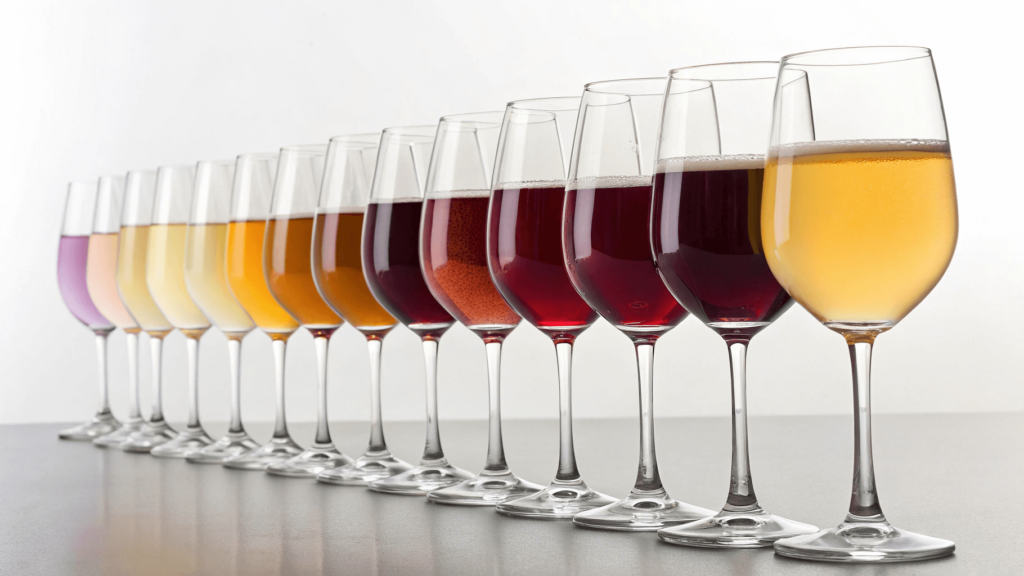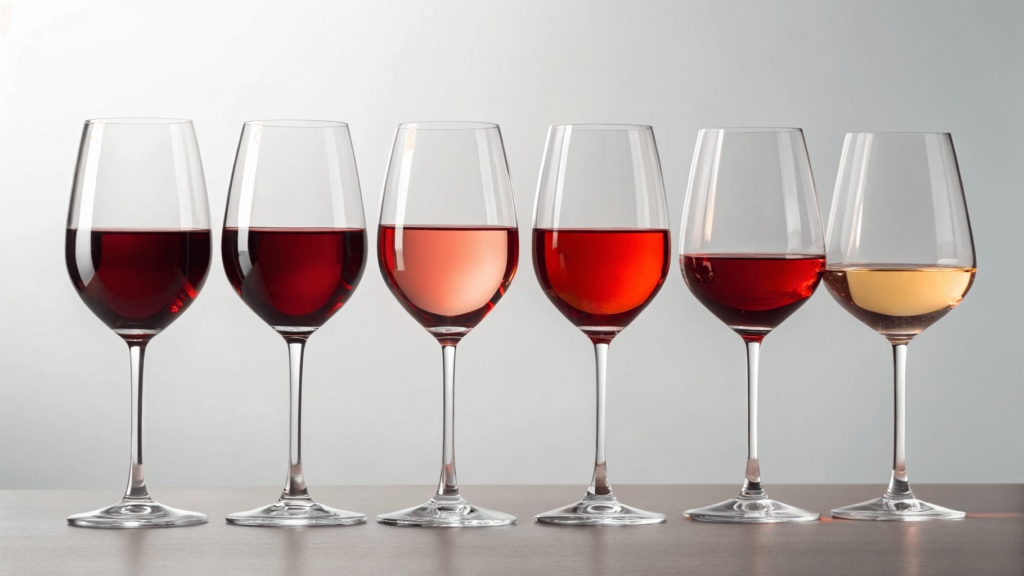Dive into the vibrant world of natural wines, where every hue tells a story of tradition, terroir, and minimal intervention winemaking.

You know that moment when you’re standing in front of a wine shelf, mesmerized by the rainbow of colors before you? I’ve been there too. As someone who’s spent countless hours exploring the natural wine world, I can tell you that those striking hues aren’t just for show – they’re telling you a fascinating story about what’s in your glass.
The Rainbow in Your Glass: Understanding Natural Wine Colors
Natural wines are like the rebel artists of the wine world – they break conventional rules and express themselves in the most authentic ways possible. Unlike conventional wines, which often undergo various treatments to achieve consistent coloring, natural wines show up in their birthday suits, if you will – completely naked and unfiltered .
Pale Yellow to Golden: White Natural Wines
Remember that morning sunshine streaming through your window? That’s what a natural white wine might remind you of. These wines can range from an almost transparent pale yellow to a rich golden amber. The color intensity often reveals:
- Skin contact time
- Grape variety
- Oxidative winemaking practices
- Age of the wine
What makes natural white wines particularly interesting is their tendency to show more color variation than their conventional counterparts. Don’t be surprised if your natural Chardonnay looks a bit darker or more golden than what you’re used to – that’s the beauty of minimal intervention winemaking .
The Sunset Spectrum: Orange Wines

Ah, orange wines – the unicorns of the wine world. Despite their name, they can range from pale amber to deep bronze, and sometimes even take on a salmon-like hue. These wines are essentially white wines made like reds, with extended skin contact that creates their distinctive color .
The fascinating thing about orange wines is how their color develops:
- Initial fermentation: Pale golden
- Extended maceration: Deeper amber
- Aging: Evolution to rich orange or bronze
Pretty in Pink: Rosé Natural Wines
Natural rosé wines are where things get really interesting. Unlike conventional rosés that often aim for that perfectly consistent “Instagram pink,” natural rosés embrace their wild side. You might find them:
- Showing a cloudy pink hue
- Displaying subtle orange undertones
- Presenting various shades from pale salmon to deep ruby
Ruby to Purple: Red Natural Wines

Red natural wines are particularly expressive in their color range. From light ruby to deep purple, these wines show us what grapes can do when left to their own devices . The color intensity can tell you about:
Understanding Color Variations in Natural Wines
Let’s break down what influences these beautiful hues:
| Factor | Impact on Color | Common Examples |
| Grape Variety | Primary color base | Pinot Noir (lighter), Syrah (darker) |
| Skin Contact | Color intensity | Brief (lighter), Extended (deeper) |
| Oxidation | Color development | Fresh (vibrant), Oxidative (muted) |
| Terroir | Subtle variations | Cool climate (lighter), Warm climate (deeper) |
The Natural Wine Rainbow: What It Means for You
Here’s the thing about natural wine colors – they’re like fingerprints, unique to each bottle. While conventional wines might aim for consistency, natural wines celebrate variation. That slightly cloudy appearance or unusual hue? That’s not a flaw; it’s character .
Expert Tips for Color Assessment
- Hold your glass against a white background
- Tilt the glass at a 45-degree angle
- Look at the color gradients from the center to the edges
- Notice any cloudiness or sediment (it’s perfectly normal!)
Embracing the Spectrum
Natural wines teach us to appreciate authenticity over perfection. Their colors tell stories of:
- Traditional winemaking methods
- Minimal intervention practices
- Seasonal variations
- Unique terroir expressions
In Conclusion
The world of natural wine colors is as diverse as nature itself. These wines remind us that beauty doesn’t have to fit into predetermined categories. Next time you pour yourself a glass of natural wine, take a moment to appreciate its unique hue – it’s telling you a story about its journey from grape to glass.
Want to learn more about natural wines? Check out our guides on natural wine tasting and food pairing suggestions!
